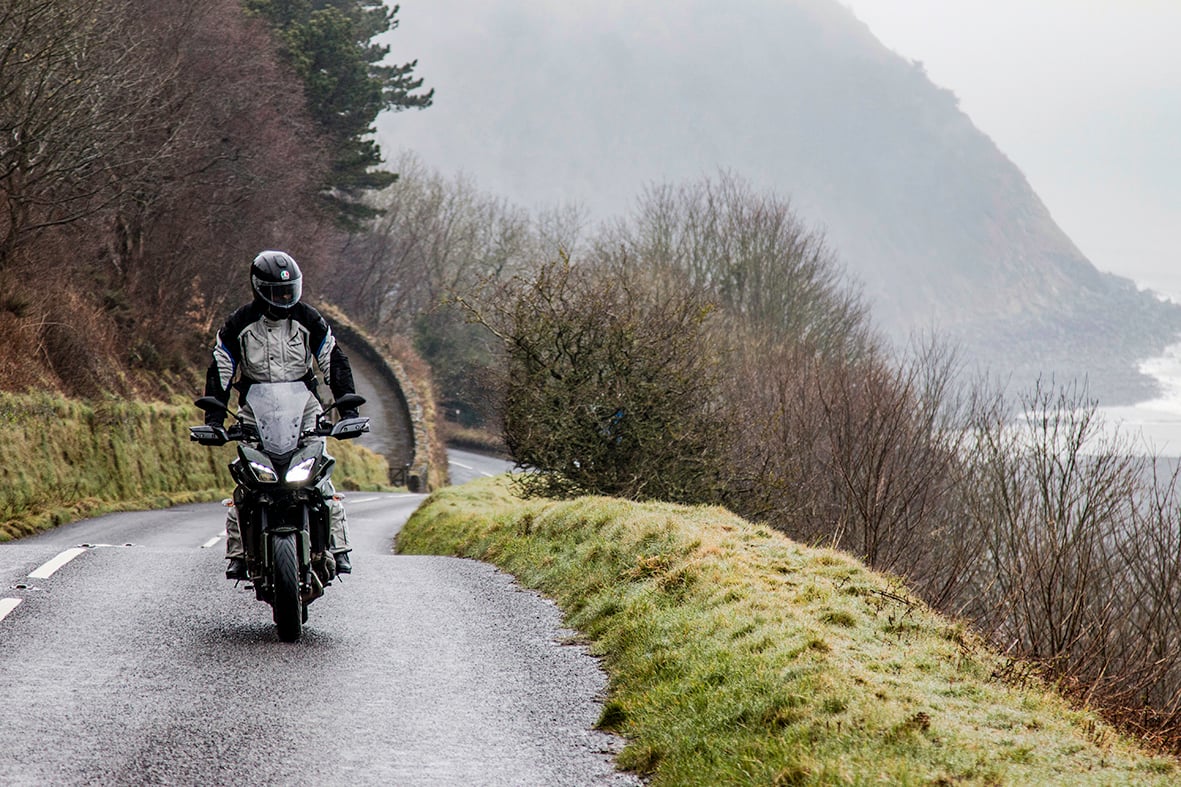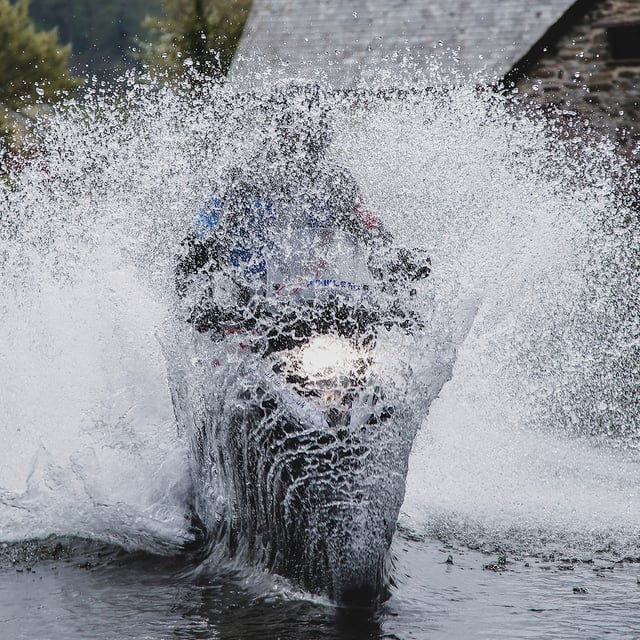Nico Cereghini is a former Italian rider and journalist who has always been committed to motorcycle safety. A familiar face on Italian TV, as race commentator and motorcycle test rider he led his own campaign to raise awareness amongst riders regarding protection and safety on the road. Nico is best known by fans young and old for his famous motto: “wear your helmet securely fastened on your head, switch your lights on even in daylight, and always ride safely!”
You need to approach wet conditions with respect; gaining experience is key. Even Valentino Rossi struggled in wet races at the start of his career. But then he got good at it, among the best in fact. But here we are talking about riding on the road, not the track, and when it rains very few riders feel relaxed. I try to encourage and at the same time inform those who don’t feel safe.
Firstly ... don't get wet! This might sound trivial but is the place to start. Clothing that can keep you warm and dry is essential, as is a good helmet with a visor that won’t fog up. And if the rain is heavy, hands and feet should also be protected against the damp with efficient overgloves and overboots. Always keep a good rain suit with you on the bike, even in summer. And when it's cooler, a multi-layer jacket and pants combo is ideal, perhaps even in Gore-Tex.
Why do you need to be prepared? Because rain almost always takes us by surprise on a sunny day. Stop and cover up as soon as you feel the first drops or, better still, anticipate the rain when you see dark clouds approaching. In this way, you will avoid the most common mistake, where we think no, not now, I’ll wait a little longer, another couple of miles… and then we’re soaked before we can find shelter.

Generally speaking, if you are used to riding smoothly, ‘painting’ the turns on each subsequent lean, using the fluidity of your engine without revving the gears and using the engine brake to slow down before entering the turns without just sitting on the brakes, then you are ready to ride in the wet. Sensitivity is important, and that comes with experience, but you have an advantage anyway.
Smooth riding, this is the secret. The bike should preferably have a stable front/rear set-up. To limit load transfers, or rather the bottoming of the fork during braking and compression of the rear end during acceleration, you need to get used to braking gradually, acting on both wheels while, at the same time, accelerating gently from medium-low revs.
And if you do this in the dry too, then you’ll be on the right track.
I barely need say this, but we don’t lean much in the wet, of course. You can compensate a little with the weight of your body, as lateral movement can help you to better complete the turn for example. And more experienced riders know that even light pressure on the rear brake can help you hold a trajectory. Try to do it in the dry and you’ll see how effective it is.
My specific advice doesn’t end there. Since the road is not the track, remember that the surface changes constantly, sections with decent grip alternating with slippery patches. Bear in mind that Italy’s state and provincial roads are often poorly maintained, patched up at best, dirty and full of dips and potholes. Don’t take anything for granted. Where you rode yesterday might look very different today. And it is always useful to keep a good distance from other vehicles so as to avoid any unexpected maneuvers by distracted drivers, also considering that many are driving with reduced visibility.

.jpg?width=640&name=shutterstock_755132053%20(1).jpg)
Watch out for initial rain, the most dangerous because the dirt, smog and oily residues from cars and trucks will dilute and mix with the first millimeters of water on the road surface. This very dangerous layer will be washed away by heavier rain and only then will grip conditions improve. In the city, beware of manholes, tram tracks, the white stripes of road markings and pedestrian walkways, as well as cobblestones and speed humps. There are many urban traps to look out for.
Tires are important. Something I say to all riders is trust in your feelings. If you don’t feel safe, if you have no feeling with the tires, perhaps it is not you who is at the limit but your tires. Because high-end bikes are generally well equipped in terms of tires, but others are not. Of course, the pressure must be correct and they shouldn’t be worn, but if everything is in order and the bike tends to slip or just doesn’t feel right, perhaps it’s time to replace your tires with something more effective. If necessary, ask your more experienced friend for advice and, above all, trust the right guy, the motorcycle tire specialist.
When you finally feel comfortable on the bike in the wet - the right equipment, smooth riding, experience and sensitivity - you will experience one of the most satisfying sensations in the life of a rider. I’m exaggerating a little but we’re all still kids at heart. It's raining, it's cold, everyone’s closed inside their cars or under umbrellas and you are free, travelling in space… like a new kind of superhero.